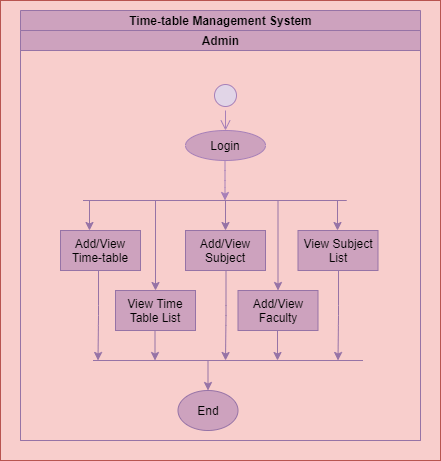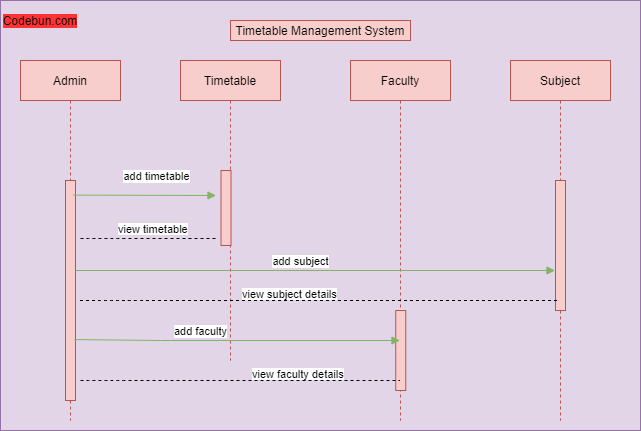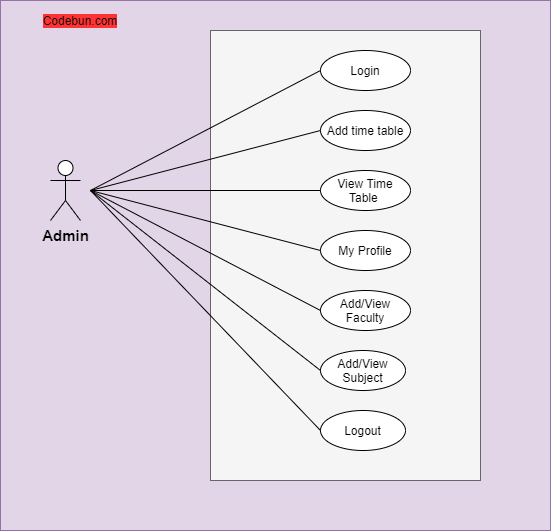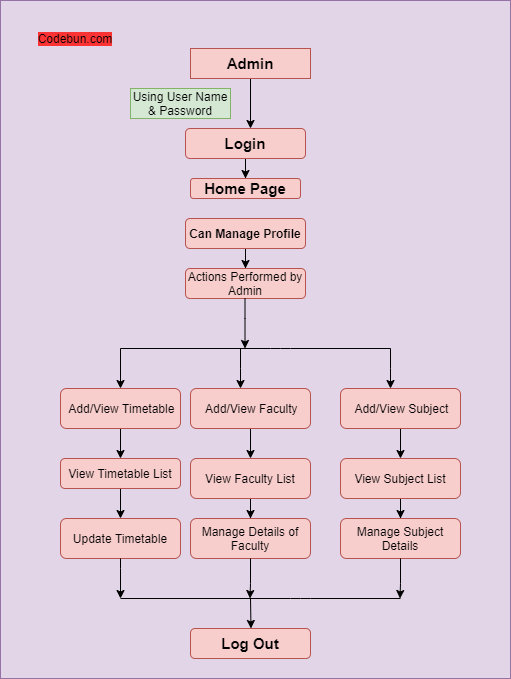UML diagrams for the Timetable Management project. Following are the different UML diagrams like Components, Activity, Use Case, and Sequence diagrams of the Timetable Management System.
With the help of these diagrams, one can get a better understanding of the project.
UML Diagram for Timetable Management System
In this article, we have put together the structural UML diagrams i.e. component diagrams, and three types of behavioural UML diagrams i.e. Activity, Sequence, and Use Case diagrams for the Timetable Management Project. We have also covered the data flow diagram (DFD) for this project.
This web application is developed to provide an online medium where Admin can manage the overall timetable for any educational institute.
Component diagram for Timetable Management Project
Component diagrams are essentially class diagrams that focus on a system’s components that are often used to model the static implementation view of a system. The components are connected by lines representing relationships within the systems.
In the diagram it can be seen that there are components namely timetable, faculty, and subject.
Admin can Add/Remove/Update any details related to the timetable, faculty, and subject into the system. Admin will be allowed to add/remove any student and Teacher member. Admin will be responsible for maintaining the databases. Admin can create the timetable with all the information like timing, subjects, faculty, days, etc. Admin can access the timetables and other information anytime.

Activity diagram for Timetable Management Project
Activity diagrams in UML display the functionalities of various activities and flow in management processes and software systems. The flow in the activity diagram can be sequential, branched, or concurrent.
Admin will be responsible for maintaining the system and also, keeping a check on faculty members, timetables created for classes, information about class timing, subjects, upcoming/ongoing exams, etc.
Admin can View and Add/EDIT/Delete new faculty into the system. Admin can View and Add/EDIT/Delete new subjects into the system. Admin can manage subjects, students and faculty members.

Sequence diagram for Timetable Management Project
Sequence diagrams in UML are used to illustrate the sequence of messages between objects in an interaction. A sequence diagram consists of a group of objects that are represented by lifelines and the messages that they exchange over time during the interaction.
Admin can View and Add new faculty into the system. Admin can View and Add new subjects into the system. Admin can manage subjects, students and faculty members.
Admin can create the timetable with all the information like timing, subjects, faculty, days, etc.
Admin can access the timetables and other information anytime.

Use Case Diagram for Timetable Management Project
A UML use case diagram can create a broad, high-level view of the relationship between use cases, actors involved, and systems being performed.
As you can see from the examples below, use cases are represented by oval shapes, and the lines then show at which point an actor/user participates and interacts with their corresponding use case. You can see where each actor is involved in the entire process.
Since here there is only a single user i.e. Admin, every use case is accessible to the admin.

DFD Diagram for Timetable Management Project
A data flow diagram represents the flow of information for any process or system. It shows the system with its relationship to external entities. Here, we can see how the users and the process flow work in a system.
Admin will manage the overall application. The important objective is to have an application where the timetables can be created and updated accordingly. This project has all the necessary functionality from adding and deleting timetables, faculty, and subjects from the system.
Admin can manage the “MY Profile” and can change the password. There is Login/Logout functionality.

Click here to get the source code
